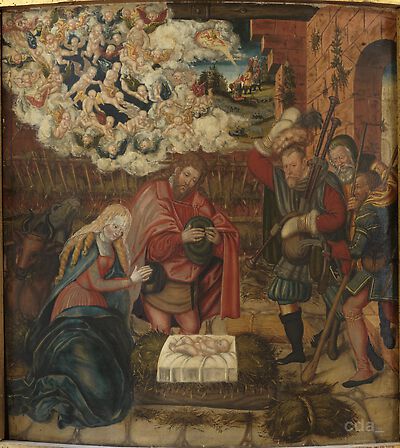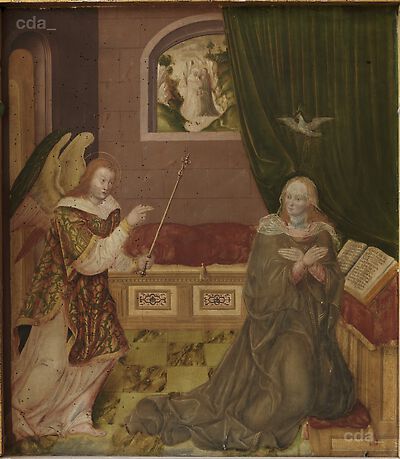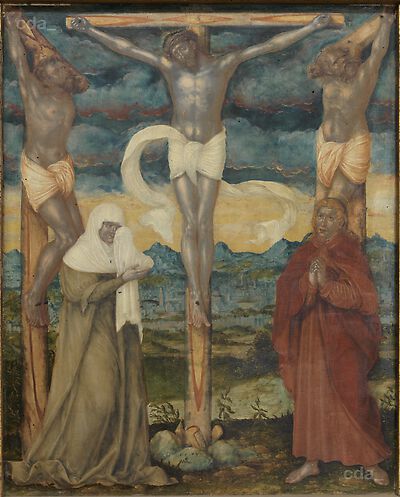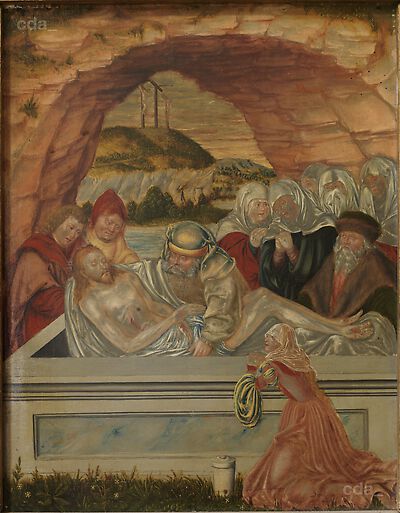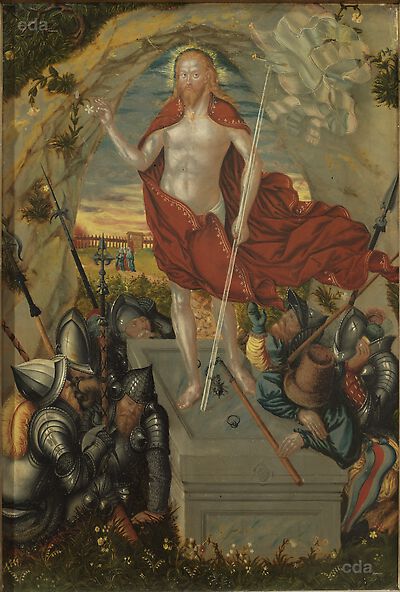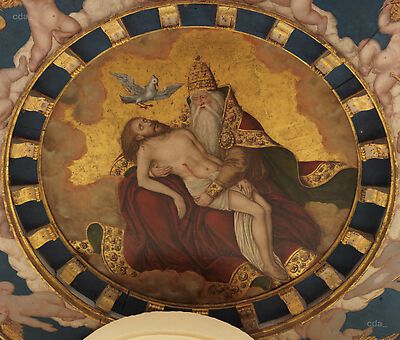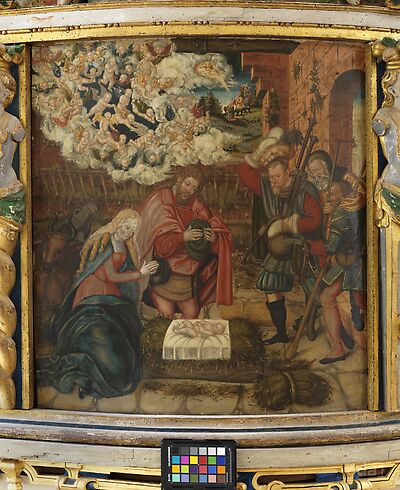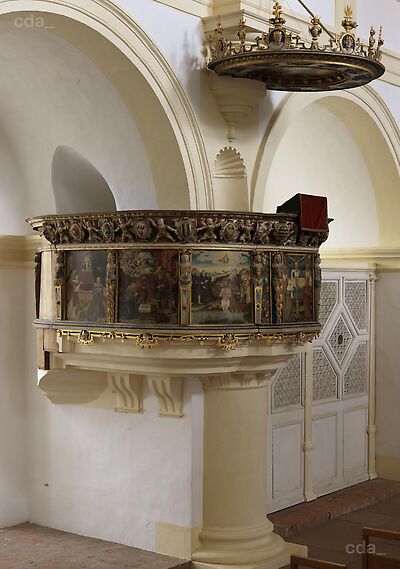Support
The panels are mounted in the pulpit and due to the coniferous wood paneling are not accessible from the reverse, therefore any assessment of the support remains conditional. In the few areas where bare wood is visible it is pale in appearance.
The examination report from 1990 of the conservation of the abat-voix states that its panel painting was executed on lime wood. The support of the altarpiece created by Cranach the Younger for the castle chapel was also lime wood. It may therefore be assumed that the pulpit paintings were also painted on lime wood.
When viewed in raking light a slight unevenness of the surface suggests that the panel consists of four planks.
[Herrschaft 2013, 35, 37]
Ground and Imprimatura
A thin glue-chalk ground was applied with a brush to the sized support. On the right and left edges of the panel the ground extends to the edge of the support. The curved panel was fixed at certain points during the application of the ground. Along the top edge there are two small raised dots of ground measuring 0.8 cm in width. These are located 24 cm from the left edge and 20.5 cm from the right edge. As the curved panel could not be fixed in a grooved batten it must have been held in place at these two points. There is a thin lead white imprimatura covering the ground.
[Herrschaft 2013, 39]
Underdrawing
The underdrawing on the pulpit paintings was executed on the imprimatura. The lines were carried out in a dry drawing material, possibly a grey/black chalk. The type of underdrawing can be described as sketchy and reduced to the essential lines to describe contours and to define forms. Without elaboration of details and hatching strokes for shadows or volume these underdrawings serve only as a rough orientation for the painted version. During the underdrawing process no clarification from a rough design to a more detailed final underdrawing is apparent. It is hard to image that the painting was completed on the basis of this underdrawing and without reference to a pre-existing design or a prototype.
[Herrschaft 2013, 41]
Paint Layers and Gilding
The paint layers probably consist of pigments bound in oil (a test for protein proved negative). On all the panels the paint layers extend to the edge at the sides - like the ground - whereas the paint layers at the top and bottom end before the ground.
By and large all the panels exhibit a very economic painting technique with a thin application of paint, which nevertheless is predominantly opaque. In addition there are areas of glazed colour, where the imprimatura is occasionally visible and influences the colour scheme of the panel.
The quality of the painting is very mixed and reveals the cooperation of more than one person on each panel. Many of the affectionately executed details are only visible close up, which considering the position of the panels 2 meters above is never possible. Other areas are less precise and occasionally unfinished (this is also the case for the decorative painting on the pulpit).
The Virgin's robe was initially painted in red (vermilion) and the contours and shadow were added in dark red glazes. The decolleté and the hem of the sleeve were finished with very filigrane golden decoration. The Virgin's cloak was initially painted in blue (azurite mixed with lead white). The arrangement of the folds and highlights were applied in white and the shadows in black. The hem was then decorated with a thin gold line.
Joseph's coat was also initially painted in red and the folds and highlights in white. Subsequently the contours and the shadows were added with a dark red glaze.
A vermilion and lead white admixture was employed for both the coats of Joseph and the Virgin.
The dark green lining of the farmer's overcoat was painted employing verdigris mixed with earth pigments (ochre).
The yellow garments of the farmer (stockings, shoulder cloak) were painted employing lead-tin yellow.
The faces, the hair and the hands of the figures were painted in great detail with different facial expressions. Apart from the rosy cheeks and lips the Virgin's face was predominantly executed in light grey tones with white highlights. The flesh paint of the male faces, the baby Jesus and the hands was initially painted brown, followed by shadows in a subtle grey. Subsequently the highlights were added in a lighter flesh-colour. Occasionally contours were added in brown, for example Joseph's nose and the thigh of the baby Jesus. Otherwise such outlines are limited to the execution of the eyes and some mouths.
The head and beard hair was executed initially in a flat base tone over which fine hairs in a lighter paint were added. Single strands were also applied in a darker paint.
[Herrschaft 2013, 50 – 52]
- examined by Jana Herrschaft
